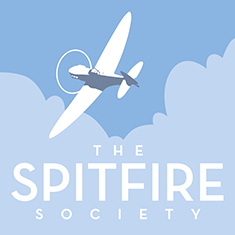Obituaries
Please let us know if you would like to contribute an obituary or message regarding someone who has died and we will endeavour to assist.
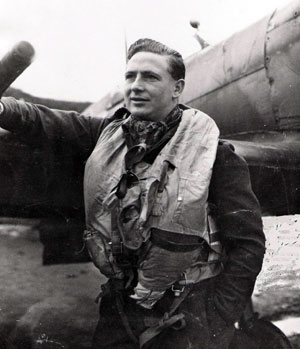
Flight Lieutenant Dennis Keep 1923-2020
My father, Dennis Keep, usually known as Den or Denny was born on 4 July 1923 in High Wycombe Buckinghamshire. He went to Borlase School in Marlow, loved maths and science and played for the school's cricket and rugby teams.
In July 1941, when he was 18, he enlisted as aircrew in the RAF volunteer reserve, and then was quickly accepted for pilot training. He trained initially in Scotland and then went to Canada to complete his training. He gained his pilot's wings in December 1942 and was commissioned as a Pilot Officer. He was promoted in June 1943 to Flying Officer.
In January 1944 he returned to England and joined 603 Squadron. After taking a Fighter Leader course, he was posted to 129 Squadron serving with them in England, Norway and Germany. He flew with them until the end of the war, finishing the war with the rank of Flight Lieutenant. The squadron , among other things, provided long-range escorts for Bomber Command's daylight raids and Dennis also flew to patrol the East West border in Germany.
Dennis was demobilised in July 1945 but he never lost his love of spitfires. He had many tales to tell about his war time life although rarely talked about the danger or the combat. His tales were of the great camaraderie that existed between the members of the squadron and their sometimes hair-raising escapades! He loved flying spitfires and was thrilled and happy to be able to fly one in July 2019, at the age of 96, over 70 years after he had last flown!
When Dennis left the RAF he joined his father's painting and decorating business, subsequently becoming a lecturer in painting and interior design at Wycombe College, where he stayed until he retired.
In 1950 he married Pat, having met her on demob leave at a dance. They had a daughter, Gillian, in 1956. Dennis and Pat shared many interests, they were founder members of the local motorbike club, stalwarts of the local amateur dramatic society and throughout their lives, travelled widely even when it was less usual to travel abroad. Dennis was very sociable, loved to try new things (especially food) and always found things to enjoy and appreciate throughout his life.
Pat died in 2011 but Dennis made a new life for himself, learning to cook and more importantly, joining the Spitfire Society which became so important to him over the last nine years. He attended all the meetings, and was always happy to be on the stall for local events, chatting to all who came by. His humour, his optimism and and love of life (and spitfires) will be much missed.
Text by Gill Keep
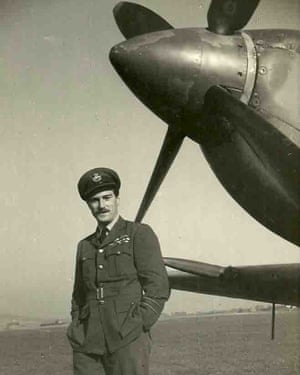
Wing Commander Paul Farnes DFM 1918-2020
Paul Caswell Powe Farnes was born on 16 July 1918 in Boscombe to a mother who died in his childbirth and a father that returned home to Australia after the First World War without his newly born son. The midwife present at his birth adopted him and he grew up in Walton-on-Thames and attended Surbiton county grammar school and Kingston technical college. After finishing his education he secured a role at Vickers Armstrongs factory at Weybridge. Foreseeing the impending War he initially considered joining the Royal Navy but switched to the Royal Air Force Volunteer Reserve in 1938.
As a Sergeant pilot with 501 Squadron flew to Bétheniville aerodrome from Tangmere on the 10 May 1940 to try and stem the German invasion of France. Within three weeks he had shot down or shared in the destruction of four German aircraft, an impressive record for a pilot trained less than eight months beforehand. As France fell to the German advance, his Squadron retreated to Le Mans airfield and evacuated back to Tangmere via the Channel Islands during a period he described as a ‘shambles’.
During the Battle of Britain, Paul remained with 501 Squadron and their home base was Gravesend and operated from RAF Hawkinge as a forward airfield. On the 12 August he shot down a Ju 87 over North Foreland in Kent and the following two Stukas:
Ju 87B of 10/LG1 was shot down by 501 Squadron during combat over the Channel at 12.00 with the aircraft crashing into the Sea near a lighthouse at South Folkestone Gate. Hptmn R. Munchenhagen baled out and was captured but Oberfw Heyse was killed.
Ju 87B of 10/LG1 collided with high tension cables whilst being attacked by 501 Squadron at 17.30. The aircraft crashed at Shorncliffe Crescent in Folkestone, Uffz H. Weber was killed and Uffz F-H. Kraus was mortally wounded on capture and died three days later in Royal Victoria Hospital, both buried in Folkestone New Cemetery in Hawkinge.
18 August 1940 - Ju 88A F1+GP of 6/KG76 was shot down by Sergeant P.C.P. Farnes of 501 Squadron whilst on a mission to bomb West Malling airfield at 13.40. Aircraft crashed at Church Farm, Aylesford and Oberfw K. Krebs was killed but Fw O. Watermann, Uffz H. Loffler and Sonderfuhrer Lt Buchmeier baled out and were captured.
28 August 1940 - Bf 109E-4 (5395) of JG51 was shot down by 501 Squadron whilst in combat over Canterbury at 09.10. Aircraft crashed at South Barham Farm, Denton, Oberlt E. Kircheis baled out and captured with a broken leg.
On 30 August 1940, he accounted for He 111 and two Bf 109s on 2 September 1940 and a Bf 110 on 3 September 1940.
2 September 1940 - Bf 109E of 3/JG53 shot down by 501 Squadron at 08.50. Aircraft crashed at Bridge Farm Field, Bilsington, pilot killed and not identified, his remains buried in Aylesham Cemetery.
Paul also claimed a Do 17 on 14 and 27 September 1940 and a Ju 88 on the 30 September 1940, this was whilst he was returning to RAF Kenley due to a problem with his oxygen system, the aircraft crashing close to Gatwick Airport and he subsequently met the German pilot. By the end of the Battle on 31 October 1940, he had also claimed a Bf 109. During his time at readiness at Kenley he wrote the poem Readiness at Dawn, it wasn’t published until 2018 and reproduced on the rear cover of the Journal. As a result of his multiple air combat victories he was awarded the Distinguished Flying Medal on 22 October 1940 and commissioned as an officer on 3 December 1940.
Following the Battle, he undertook instructional duties within Britain before being transferred to Aden to fulfil a similar role. Transferring to 229 Squadron in February 1942 ahead of a move to Malta a month later to defend the Mediterranean Island from German and Italian air attacks. Paul took command of the Squadron due to the previous commanding officer suffering an injury and evacuated the Squadron of Hurricanes to Egypt in May of that year as Spitfire replacements became available. Posted to Iraq until 1945 and returned to Britain later in the UK as a Wing Commander overseeing two Squadrons of Spitfires and Mustangs until 1946. Paul chose to remain in the RAF until 1958 fulfilling a number of roles including as a flying instructor.
In civilian life he worked in the motor industry, builder merchant and hotel around Worthing. Paul married Pamela Barton in 1948 and she pre-deceased him in 1989 and re-married to Cynthia Lacey in 1994 but she also died in 2012.
Paul Farnes died on 28 January 2020 and survived by his two children Linda and Jonathan.
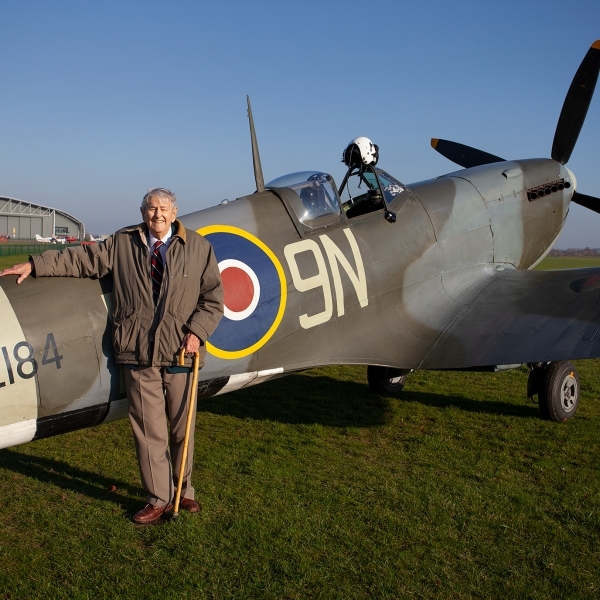
John Stanborough Bates 1929-2019
John volunteered for RAF aircrew in late 1946 and flew solo on 30 July 1947 in a Tiger Moth. He was selected for further training in Southern Rhodesia and then progressed to the last Spitfire conversion course at RAF Stradishall.
Having completed his conversion course John was posted to 80 Squadron flying the Mark 24 in Hong Kong with plenty of opportunities to practice ground attacks, interceptions and low flying. Whilst in the Far East he converted to Sunderland flying boats operating from Japan in support of the Korean War. The remaining part of his RAF service which lasted until 1983, involved being a flying instructor, flying Vampires, Jet Provosts, Canberras, Valiants and Victors in numerous roles including air to air refuelling.
For his 90th birthday his family organised a visit to Duxford which featured the actual Victor he flew a circumnavigation of the world and Spitfire TE184 flew in, this was an aircraft he flew whilst undertaking his original Spitfire conversion course.
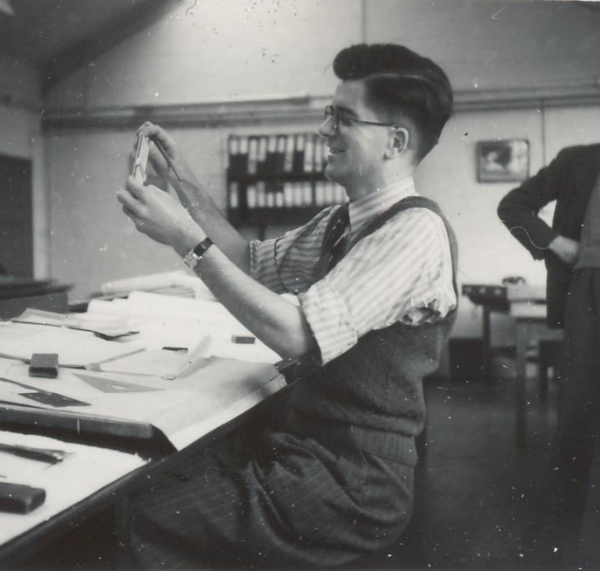
Gordon Monger 1925-2019
Gordon Monger, who has died recently aged 93, worked as an aeronautical engineer and spent his entire career working for Supermarine and its successor companies.
Gordon was Born in 1925 and grew up in near Winchester, living initially in Bullington and later Longstock. He spoke fondly of his childhood and growing up in the countryside. As a young child he earnt pocket money by catching rats. He would check the rat traps he had set along the hedgerows before going to school, collecting the tails and taking them in his satchel to convert later into cash.
During the war Supermarine experimental flight test was relocated to HMS Kestrel, Worthy Down, a bicycle ride from Gordon's home. This is where he began working for Supermarine in January 1941 as a fitter’s mate. When he arrived on his first day, he discovered that his hours of work were 7:30am to 7:30pm, there was little electricity, no heating, no toilet, no water, it was dark, and freezing, but there were a number of glorious Spitfires and other aircraft in the hangar. George Harris started one week later and they remained friends for life! Gordon served his apprenticeship as a fitter erector at Worthy Down and later at the experimental hangar Hursley Park, mainly working on prototype Spitfires, Seafires and Spitefuls. He was amazed that by the time he was sixteen he was fitting upgraded engines and propellers and performing other modifications on these experimental aircraft, often helped by a fourteen year old. In addition to training in the various experimental machine shops he also spent time working in the production Spitfire machine shop which had been relocated to Shorts Garage, Winchester after Southampton Works was bombed. After completing his apprenticeship in 1946 he then went on to study Aeronautical Engineering at Southampton and Aeronautical Science at Cranfield College of Aeronautics and later qualified as a chartered aeronautical engineer.
While completing his studies Gordon continued to work for Supermarine with various stints at Hursley Park and Chilbolton. During this period, he worked on the Seagull and a variety of other experimental piston and jet aircraft. After this he began work as a design draughtsman, designing parts for various aircraft. He then moved to the Aerodynamics section of the Technical Office where amongst other things he was focused on aerodynamic loading and aero elastic distortion of high speed swept wing aircraft.
After completing his studies Gordon returned to the Flight Test Technical office focusing on stability and control, performance, engineering systems, and armament trials of the Swift and Scimitar. He conducted this work at Chilbolton, Wisley, and Libya for the tropical trials.
From 1959 to 1965 Gordon worked on the TSR2 project and was based at Wisley, Warton, and Boscombe Down. He was responsible for determining the flight test programme and developing test and analysis methods and instrumentation requirements for the project. When the TSR2 was cancelled by the Labour Government, Gordon, like many others who worked on the project, was dismayed with how quickly materials from the project were scrapped and often wondered what could have become of this promising aircraft.
After the TSR2, Gordon moved to passenger aircraft still based at Wisley. Initially he headed a section responsible for the development and certification of the engineering systems on the 400 series BAC 1-11. He then headed a section which was responsible for the testing and certification of the coupled approach and automatic landing systems on the Super VC10 and 500 series BAC 1-11. He often mentioned that one of the highlights of his life was receiving a phone call to notify him that a VC-10 had successfully landed for the first time in thick fog at Heathrow, completely controlled by automated systems.
The final aircraft that Gordon worked on was Concorde. He was responsible for the testing and certification of the navigation and other systems on the aircraft and flew on the aircraft.
After aircraft, he spent the final decade of his career working on the development of ballistic missiles, in particular the Chevaline upgrade to the Polaris missile system. When he retired Gordon had worked for the same company for nearly fifty years.
In 1971 Gordon married Judy Mansbridge, daughter of Spitfire designer Ernest, whom Gordon had indirectly worked for earlier in his career. Gordon and Judy designed and built a house near Cirencester where they have lived since they were married.
Gordon was a keen mountaineer and enjoyed visits to the Lake District and climbing in the Alps. He climbed several of the highest mountains in Europe, include Mont Blanc and the Matterhorn. When he retired, he took up Cooking, Art (painting), Pottery, Youth sailing instruction, led walking groups and kept fit with walking. Gordon died on 16th February 2019 and is survived by his wife, son and three grandchildren.
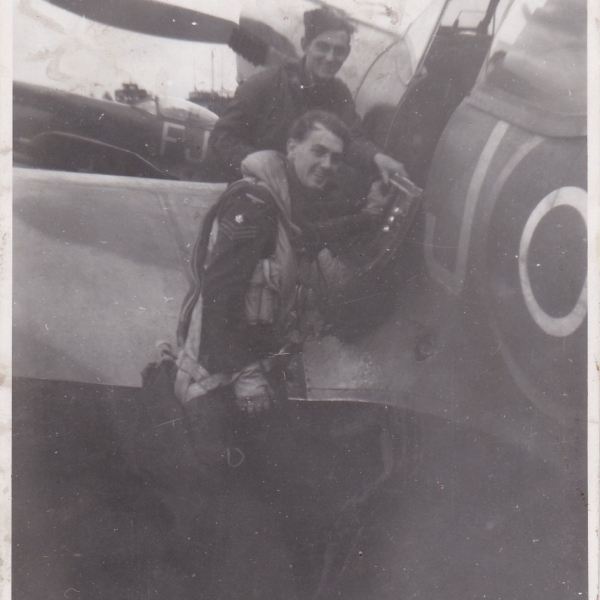
Gordon Spencer, 1924-2019
Gordon joined the RAF in 1943 aged 18 and after training in Bulowayo, Cranwell and Keevil he was posted to 164 and then 63 Squadrons flying Spitfires. They were deployed to Lubeck in Northern Germany in 1946 to patrol the new border with the Russians. His Officer Commanding was Paul Farnes.
After Demob in 1947 he joined 610 County of Chester Squadron RAuxAF (with Cyril ‘Bam’ Bamberger as his Flight Commander) again flying Spitfires – they performed at many airshows in the North West. He remained until 1950.
Following this he had a successful career with Unilever becoming General Export Manager and traveled to over 65 countries worldwide (as a passenger!).
His funeral is on 28 February 2019 at Haycombe Cemetery Bath.
Bulowayo, Rhodesia, 1943
With Her Majesty Queen Elizabeth II at 75th Anniversary of RAuxAF at RAF Club Piccadilly.
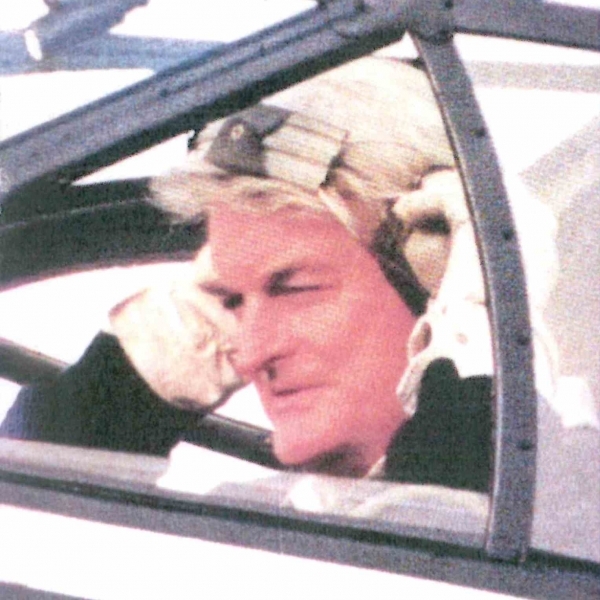
Sir Adrian Swire, DL 1932-2018
Adrian Christopher Swire was born 15 February 1932 to parents Jock and Juliet in London, his father bought a majority stake in Cathay Pacific in 1948, aviation would remain an indelible part of Adrian’s life for many decades. His childhood upbringing was at the family estate at Hubbard’s Hall, Essex and educated at St Peter’s Court prep school at Broadstairs, Kent and Eton. He was an officer in the Coldstream Guards as part of his National Service and stood guard during the laying in state ceremony for King George VI in 1952. Whilst undertaking a history degree at University College Oxford he joined the Oxford University Air Squadron, his instructor at the time was Group Captain David Green (Founder of The Spitfire Society) and gained his private pilot’s licence.
In 1956 he moved to Hong Kong to take up in a position in the family firm relating to the China Navigation Company’s fleet in Japan and south-east Asia. Whilst there he joined the Royal Hong Kong Auxiliary Air Force as a Pilot Officer, and served five years and was engaged in flying Harvard IIbs and Auster 6 and 7s in a variety of roles. In 1961 he became a Director in John Swire & Sons Limited, Deputy Chairman between 1967 and 1987, followed by two stints as Chairman, 1987-1997 and 2002-2004. Also served as a Director of Cathay Pacific Airways (1965-2005) and was involved in piloting the airline’s first Dakota DC3 “Betsy” back to Hong Kong from Australia in the 1980s. Director of Swire Pacific Limited (1978-2008), HSBC Holdings (1995-2002); Member of the International Advisory Council of China International Trust Investment Corporation Beijing (1995-2005); Brooke Bond Group (1972-1982), NAAFI (1972-1986) (Deputy Chairman 1982-1985); President of the General Council of British Shipping (1980-1981), Chairman of the International Chamber of Shipping (1982-1987) and Member of the General Committee of Lloyd's Register (1967-1999).
Sir Adrian would also contribute significantly to many charities and organisations such as being a Visiting Fellow of Nuffield College, Oxford 1981-89 (Honorary Fellow 1998); Pro-Chancellor of the University of Southampton (1995-2004); Trustee of the RAF Museum (1983-1991), Chairman of the Royal Air Force Benevolent Fund (1996-2001), Member of the Council for Wycombe Abbey School (1988-1995); Elder Brother of Trinity House (1990); Liveryman of the Worshipful Company of Fishmongers (1962) and Guild of Air Pilots and Air Navigators (1986). He also received the following awards Honorary Air Commodore in the Royal Auxiliary Air Force (1987), Honorary Doctorate of Science Cranfield University (1995), Honorary Doctorate from the University of Southampton (2002); Honorary Companion of the Royal Aeronautical Society (1991) and Air League Founders Medal (2006).
His close connection with the Spitfire began with the purchase of MH434 following the completion of the Battle of Britain film in 1969, learning to fly it himself and mainly using it for in his own words ferrying and light aerobatics as commanded by my former instructor, David Green! This Mark IX Spitfire would remain in his own ownership until April 1983 when it was sold to the legendary pilot, Ray Hanna. However he would remain connected with the aircraft through The Spitfire Society as Vice-President (1986-1996), President (1996-2009) and Patron (2009). During this time he was known for his friendliness, generosity in donations and his humility. Indeed he only accepted the position of President (replacing the Founding President Jeffrey Quill), his belief that he could never compare himself with such an iconic Spitfire figure, but was persuaded after his nomination by Jeffrey Quill and endorsed by David Green and Sir Christopher Foxley-Norris.
Sir Adrian is survived by his wife, Lady Judith Compton, the elder daughter of the 6th Marquess of Northampton whom he married in 1970. Their children include Martha, who trained as a furniture-maker and now lives with her five children in Dorset; and two sons, Merlin, who is the Chairman, of the Swire Group in Hong Kong, and Sam, who is an executive director of the group in London. Adrian particularly enjoyed spending time with his seven grandchildren and flying his Piper Cub from his family farm and estate, near Sparsholt in Oxfordshire. He died from cancer on August 24, 2018, aged 86.
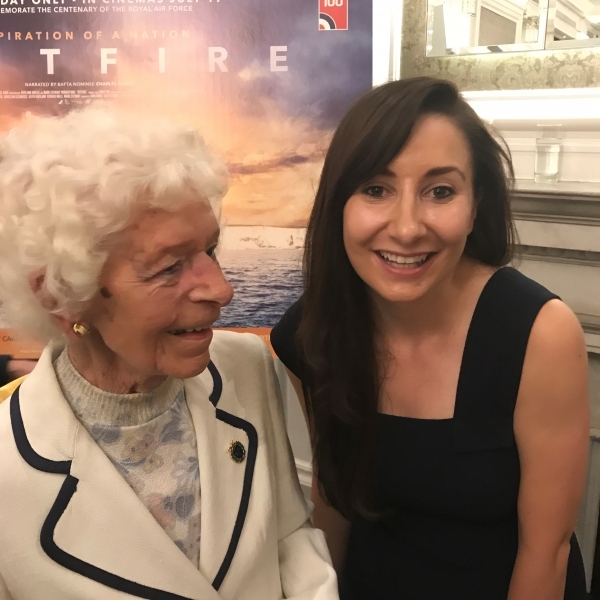
Mary Ellis 1917-2018
Mary Ellis was irrepressible. On 9 July, at the after-party for the premiere of the SPITFIRE movie in the Royal Air Force Club, Mary was still going strong as the clock moved towards midnight. “I’ve been up since six thirty,” she told me, “and I don’t want to go until after midnight”. Earlier that evening, outside the Curzon Mayfair, she had posed for the cameras in her original Air Transport Auxiliary uniform in front of a Spitfire, parked in Shepherd’s Market. That evening, she was holding court about her favourite subject, the Spitfire.
Mary had first been shown the delights of flying by Sir Alan Cobham and his flying circus when he brought a DH 60 Gipsy Moth to her father’s farm in Oxfordshire. In fields, which today at part of the Royal Air Force’s largest air station, RAF Brize Norton, an eight-year old girl went flying. She never looked back. By 17 years old, she was flying for real and gained her Aviator’s Certificate a few months later. She spent many hours in the BA Swallow, gaining experience and making herself thoroughly at home in the air.
In 1939, war curtailed her ambitions of making a career as a commercial pilot, but another opportunity emerged. “I heard about the ATA ferry service on the BBC, so thought I would apply,” she told me. Although not in the first dozen female pilots, Mary was accepted and undertook some extra navigation training before being posted to Hamble, the all-female ATA station conveniently close to the Eastleigh, Worthy Down, High Post and Chattis Hill assembly hangars of Supermarine. It was obvious that the ATA would embrace the Spitfire and Mary took to it like a duck to water
“It was simply the most beautiful flying machine ever – lovely, just lovely,” she said that RAF Club last July. Adding, that being a ‘Spitfire Girl’ was just wonderful. She really liked flying solo and” playing with the clouds. Up in the air, on my own, I could do what I liked. I would try all sorts of manoeuvres.”
After VE-Day, Mary’s log books showed that she had delivered 1000 aircraft of 76 different types, including small trainers, Wellington bombers, had been a co-pilot for several Lancaster flights and amassed 400 different Spitfires. She was also one of the first women to fly a jet when she was part of a trial for female fighter pilots for the Royal Air Force. That wasn’t to be but there were other flying opportunities for the next 50 years, including celebrating her 100th birthday with a Spitfire flight in G-ILDA, the Boultbee Spitfire at Goodwood.
One of those Spitfires which she delivered to RAF Hullavington in Wiltshire was a Mk VIII. It is still flying today in the collection of Maxi Gainza, the Argentine enthusiast who keeps it in Germany. It is the only Spitfire which the then Mary Wilkins signed in 1945 and then in 2016, she signed it again at Sandown, in the name of Mary Ellis. She had married Don Ellis, a Sandown flying instructor in 1961 when she was the chief executive of the aerodrome.
The iconic female pilot of the iconic Spitfire, Mary will always be remembered for her bubbly personality and her ability to enliven any gathering of Spitfire enthusiasts. She will be missed, but what a good innings! 101 years.
Paul Beaver, author of Spitfire Pilot
Paul’s interview with the BBC’s Matthew Bannister for Last Word, 3 August 2018, is available on the BCC I-Player.
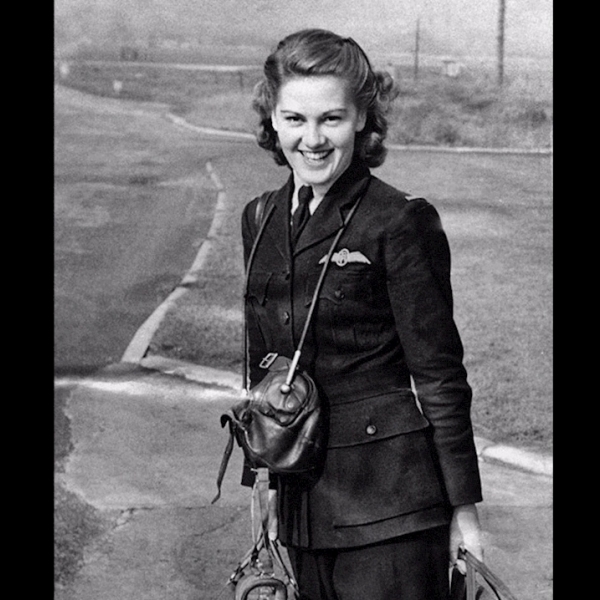
Joy Lofthouse 1923-2017
Joy Lofthouse (nee Gough) was born in Cirencester on 14 February 1923 and also had a sister Yvonne who incidentally would also join the Air Transport Auxiliary with her as a pilot. Attended at Cirencester Grammar School and worked at Lloyds Bank as a cashier but saw an advert in 1943 appealing for people to join the ATA and they would be fully trained as pilots. Yvonne also applied, partly as a response to the death of her husband whilst serving in Bomber Command and wished to make a contribution to Britain’s war effort. Remarkably both sisters were successful in gaining entry out of 2,000 applications and would join 162 other female pilots ferrying aircraft from the factories to operational squadrons in the Royal Air Force. The female branch of ATA was formed on the 1 January 1940 at the behest of Pauline Gower and the service would deliver some 300,000 aircraft during the course of the War and would also achieve equal pay with their male colleagues, a significant development in its self. Joy learnt to fly 18 types of aircraft and had a particular affinity for the Spitfire and considered it as ‘close to growing wings and flying yourself’.
After the War, Joy married Jiri Hartman, a former Czech fighter pilot and brought up three children. She later married Squadron Leader Charles Lofthouse in 1971 after her first marriage ended in divorce. Charles was a former Pathfinder Lancaster pilot and sadly died in 2002. In more recent years reconnected with her wartime experiences. Gordon Brown as Prime Minister honoured all ATA pilots with a commemorative badge in 2008 and Joy along with Yvonne attended the Battle of Britain airshow at Cotswold Airport the following year. Boultbee Flight Academy gave Joy a flight in their two seat Spitfire at Goodwood aerodrome in May 2015 and became the centre of attention at Wimbledon tennis tournament in July of last year after appearing in the Royal Box and her exploits explained to the cheering crowds. She also made a notable appearance at the Festival of Remembrance held at the Royal Albert Hall in November 2016. It was with sadness that the Society learnt of her passing on 15 November 2017. Joy’s service in the ATA was both remarkable in learning to fly from scratch and then to fly high performance aircraft with little in the way of dual instruction or training. Aircraft had to be ferried in all weathers and no navigational or radio aids that pilots enjoy today which led to many ATA pilots being killed during the War. With this in mind Joy should be rightly remembered for her skill and courage in contributing to Britain’s war effort.
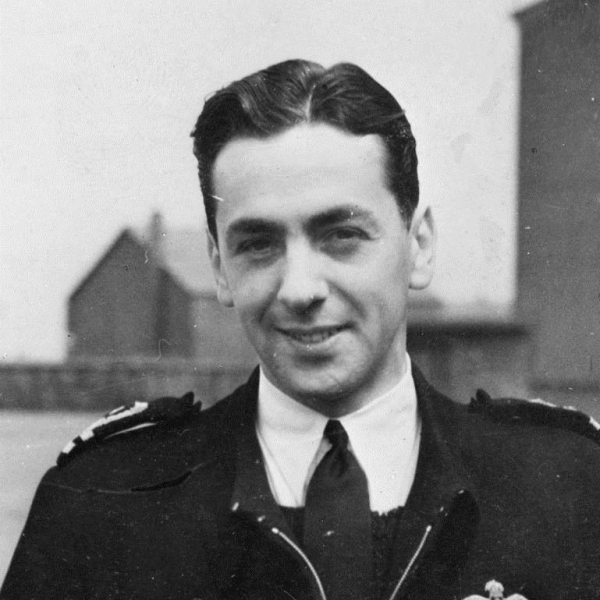
Captain Eric ‘Winkle’ Brown, CBE, DSC, AFC, Hon FRAeS, RN (1919-2016)
Amongst the best test pilots produced by this country, the sheer variety, insurmountable records and timespan of his contributions to aviation stand in conspicuous opposition to his well-known nickname!
Eric Melrose Brown was born on 21 January 1919 in Edinburgh, his father Robert had served as a pilot in the Royal Flying Corps during the First World War and this undoubtedly served as an inspiration for Eric to follow. Indeed his father took him to see the 1936 Olympics and introduced him to his former adversaries, Ernst Udet and Hermann Göring, the former also nurturing him to learn to fly and speak German. Both skills would come to play a significant part in the roles he was selected for during and after the Second World War. On the outbreak of War in September 1939 he was in Germany as a teacher and fortunately for him and this Country, he was allowed to leave with his beloved MG sports car rather than being interred for the duration.
Returning to Britain he elected to join the Fleet Air Arm as the Royal Air Force had a shortage of places even though he had learnt to fly with a University Air Squadron. Amongst his first operational roles would be flying Grumman Martlets as part of 802 Naval Air Squadron from the deck of HMS Audacity. Awarded the Distinguished Service Cross for his bravery and skill in combating Luftwaffe Condor attacks on the vital North Atlantic convoys during 1941, the actual award being granted in the following year. It would in this theatre of operations that he survived the sinking of Audacity by U-751, west of Cape Finisterre on 21 December 1941.
Eric’s outstanding flying skills had not gone unnoticed nor his language skills, after a brief spell with the Royal Canadian Air Force he was posted to the Royal Aircraft Establishment at Farnborough in 1943. This posting saw him test flying captured German and Italian aircraft in southern Italy, remarkably without any prior training as a test pilot and led to a further appointment in experimental flying back at Farnborough. Again this involved captured Luftwaffe aircraft but evolved into test flying of the new Sea Hurricanes and Seafires and particularly around their operation from aircraft carriers. By the end of the year he had accumulated 1,500 deck landings on 22 different carriers, unsurprisingly there were a few crashes due to technical failures but he emerged unscathed. For the full story of the Seafire development please click here for an illustrated and personal insights, Eric described the Seafire IIB as ‘simply the best’.
In 1944, he was appointed Chief Naval Test Pilot and Commanding Officer of the Enemy Aircraft and Aerodynamics Flights at the Royal Aircraft Establishment which he held for the next six years and involved many notable achievements. In terms of aerodynamics he assisted the United States by undertaking compressibility tests to select the primary escort fighter, this involved diving aircraft at high speed to gauge their controllability at high subsonic speeds with the Mustang achieving 0.78 as the eventual winner. It should be noted that the Spitfire IX and XI achieved 0.86 and 0.92 respectfully, showing how advanced the wing design of the Spitfire was compared with later developed aircraft. Eric would also fly the first helicopters such as the Sikorsky R4-B Hoverfly on a ferry flight from Liverpool’s Speke to Farnborough in 1945, with the only instruction being pilots notes from America! The Miles M.52 project also came under his remit and had it not been cancelled it may well have been Eric and Britain that would have broken the sound barrier ahead of the Americans, Chuck Yeager and the Bell X-1. Survived the DH 108, and solved the reason behind the deaths of his fellow test pilots Geoffrey de Havilland and Stuart Muller-Rowland. Unsurprisingly he nicknamed the DH 108, the ‘killer’ as the violent longitudinal oscillations broke the necks of pilots before structurally breaking up at high speed.
Eric’s time with the Enemy Aircraft Flight would once again see him in Germany and using his linguistic skills to uncover the Country’s aviation developments and the crimes committed during the holocaust. The test flying of the most advanced jet and powered aircraft such as the Messerschmitt 163 and 262, with minimal training it required huge courage and skill but he carried out the vital assessments without harm and even ferried back to Britain certain aircraft types like the Arado Ar 234. Whilst in Germany he would also be called upon to assist in the interrogation of the leading members of the Nazi Party, technical designers and the commandants of Bergen-Belsen concentration camps, the latter group he described as ‘loathsome’ and ‘the worst human beings he had ever met’.
Naval aviation would once again become his primary concern from the end of the Second World War until his retirement from the Royal Navy, twenty five years later notching up many firsts and records. Eric made the first tricycle undercarriage carrier landing on HMS Pretoria Castle on 4 April 1945 using a Bell Airacobra, the use of this undercarriage arrangement greatly improved visibility on approach and consequently mitigated accidents. Later that year he performed the first ever carrier landing by a jet aircraft using a de Havilland Sea Vampire and HMS Ocean on 3 December 1945. Remarkably he wasn’t granted a permanent commission until 30 March 1949 and then only as a Lieutenant but his next promotion came quicker in April 1951, which rose him up to Lieutenant-Commander. In the early 1950s, he was seconded to the United States Naval Test Pilot School at Patuxent for two years and had the opportunity to fly 36 types of helicopters. Showcasing British carrier inventions such as the steam catapult by flying a Grumman Panther from HMS Perseus whilst stationary in the Philadelphia Naval Yard at the start of 1952 and angled flight decks. The secondment also raised the number of carrier landings he made to a world record of 2,407. Appointed to the rank of Commander on 31 December 1953 ahead of his next flying role back in Britain.
Returning to Britain in 1954, he was appointed Commander (Air) of Royal Naval Air Station Brawdy in Pembrokeshire which mainly operated Hawker Sea Hawks whilst not embarked on aircraft carriers. During 1957, he became Chief of the British Naval Mission to Germany with the aim of re-establishing the military naval aviation force known as Marinefleiger, by training aircrew on the Sea Hawk and Fairey Gannet and integrating the force into NATO. Also assisted the Focke-Wulf as a temporary Chief Test Pilot during his stint with the British Naval Mission. Following his appointment as Deputy Director of Naval Air Warfare at the Admiralty from 1957, he was promoted to Captain on 31 December 1960 and stayed at the Admiralty until 1965. Due to his considerable experiences he was instrumental in the planning process for the subsequently abandoned new aircraft carrier CVA01 but was successful in the commissioning of the Blackburn Buccaneer and McDonnell Douglas F-4 Phantom for the Fleet Air Arm. Eric’s final appointments were Naval Attaché in the West German capital of Bonn between 1965 and 1967. Retired in 1970, having spent three years as Commander of Royal Naval Air Station Lossiemouth and had flown 487 aircraft types throughout his career.
Appointed the Director General of the British Helicopter Advisory Board after leaving the Royal Navy, he made a number of prophetic initiatives. Such as a national network of heliports, the use of helicopters by the emergency services, helicopters that could fly in all weathers, use of helicopter simulators and the creation of a European Helicopter Association. Largely thanks to his extensive notes he was also a successful aviation author with titles such as his autobiography Wings On My Sleeve; Wings Of The Luftwaffe: Flying German Aircraft Of World War II; Wings Of The Weird And Wonderful; Wings of the Navy; Duels In The Sky: World War II Naval Aircraft In Combat; Miles M.52: Gateway to Supersonic Flight and many aviation themed articles.
An overview of Eric’s awards include the Distinguished Service Cross (1942); Member of the Order of the British Empire (1944); Air Force Cross (1947); Boyd Trophy (1948); King's Commendation for Valuable Service in the Air (1949); Commander of the Order of the British Empire (1970); President of the Royal Aeronautical Society (1982-1983) and The Air League’s Founder’s Medal (2015).
Married Evelyn (Lynn) Macrory in 1942 and they had one son, his family home was destroyed by a V-1 missile in the summer 1944 which left his wife with concussion. Lynn died in 1998 and he lived in Copthorne up until his death with Jean his companion. Died on 21 February 2016 at East Surrey Hospital after a short illness.
For further details please see the BBC’s appropriately entitled documentary Britain's Greatest Pilot: The Extraordinary Story of Captain Winkle Brown.

